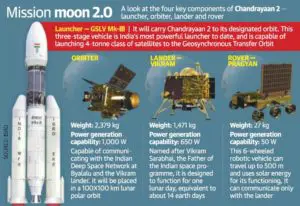Table of Contents
India@2047: Transforming into a $30 Trillion Economy by PM Modi’s Vision Plan
Significance
India’s Prime Minister, Narendra Modi, is set to unveil a road map in early 2024 to transform India into a developed nation with a $30 trillion economy by the time it completes 100 years of Independence. This vision, known as the Vision India@2047 plan, highlights the government’s commitment to driving the country’s growth and development. It aims to elevate India’s global standing and boost economic opportunities for its citizens.
Features
The Vision India@2047 plan has been in development for nearly two years, with inputs from officials across ministries. The plan aims to take India from its current level of development to a higher level by addressing various challenges and opportunities. It emphasizes the need to minimize the government’s involvement and become an enabler rather than a micro-manager. The plan also focuses on accelerating the shift from an agrarian economy to a manufacturing-based economy and reducing income inequality.
Objectives
The key objectives of the Vision India@2047 plan are to:
- Transform India into a developed nation with a $30 trillion economy by 2047.
- Ensure policy certainty for global investors.
- Minimize the government’s role and become an enabler.
- Address structural shifts in the economy and reduce income inequality.
- Maintain a high growth rate of 9% between 2030 and 2047.
Effects
The Vision India@2047 plan is expected to have significant effects on India’s economy and society. By striving for a $30 trillion economy, India aims to improve its global rankings and attract more foreign investment. The plan also seeks to address existing challenges in factors markets such as land and labor. By reducing income inequality and promoting a manufacturing-based economy, the plan aims to uplift the standard of living for millions of Indians and create more employment opportunities.
Pros and Cons
The Vision India@2047 plan has several benefits, including its focus on economic growth, attracting global investment, and addressing income inequality. By setting ambitious goals, the plan provides a clear direction for the country’s development. However, there may also be challenges and potential cons. Implementing structural shifts in the economy and reducing income inequality may require significant policy changes and reforms. Additionally, recalibrating goals based on global trends and unforeseen events will be necessary, which may pose additional challenges.
Fun Fact
Did you know that India’s economy has grown from representing 1.1% of the global economic output in 1991 to 3.5% share as the world’s fifth-largest economy today? This growth has been driven by the consistent pursuit of reform and liberalization agendas by successive governments.
To sum up, the Vision India@2047 plan holds immense significance for the future of India. It seeks to transform the country into a developed nation with a thriving economy, while addressing challenges and opportunities. By setting clear objectives, the plan aims to attract global investment, reduce income inequality, and accelerate economic growth. However, implementation will require careful planning and the ability to adapt to changing circumstances. With consistent efforts and a focus on the long-term vision, India can strive towards becoming a developed nation by 2047.
Brief Summary | UPSC – IAS
Prime Minister Narendra Modi is set to unveil a plan in early 2024 to transform India into a $30 trillion economy by the time it celebrates 100 years of independence. The Vision India@2047 plan has been in progress for two years, with input from officials across ministries. The plan will be reviewed by top leaders such as World Bank President Ajay Banga and Apple CEO Tim Cook, as well as Indian industrialists, to refine and address any concerns. The plan aims to ensure India does not fall into a middle-income trap and includes goals such as shifting the economy from agriculture to manufacturing and reducing income inequality. The plan should be periodically revisited to adapt to global trends and unforeseen events.



